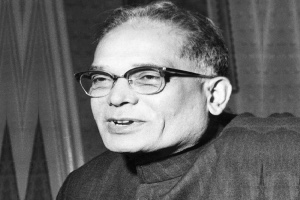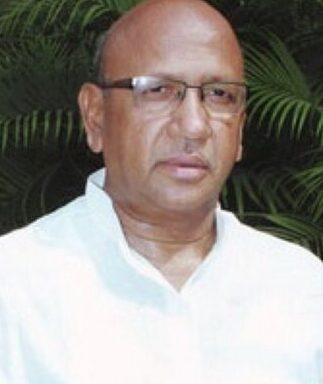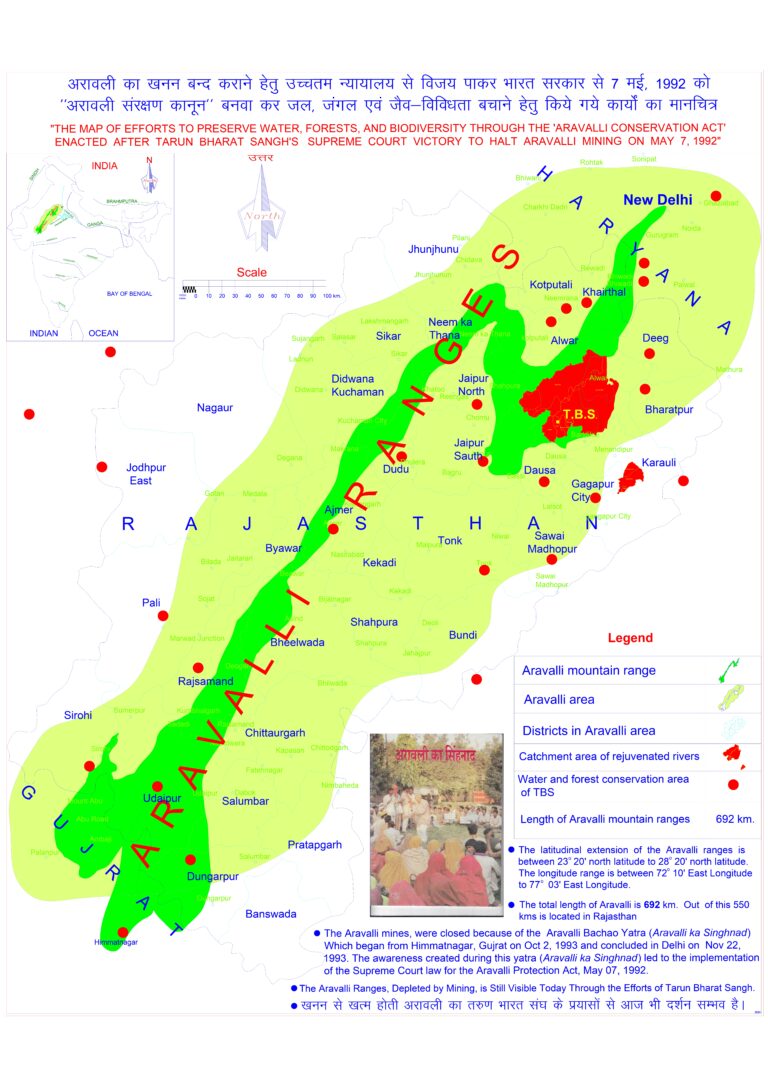
Jayaprakash Narayan
JP’s 120th Birth Anniversary – 11th October
 By Saryu Roy*
By Saryu Roy*
Jayaprakash Narayan was the greatest leader I had worked under, even though I had my grooming under the Rashtriya Swayamsevak Sangh (RSS). During the Students Movement, I had a close opportunity of working in close association with him. Incidentally, K.N.Govindacharya was closely coordinating with Jayaprakash Narayan, and I was directly working with Govindacharya. In fact, Jayaprakash Narayan, popularly known as JP, had great faith and trust in Govindacharya. Those were the times when RSS had extended its overwhelming support to Jayaprakash Narayan to strengthen his clarion call to the students to boycott their studies and join the Students Movement for Sampoorna Kranti (Total Revolution), a grand vision of Loknayak to transform the society. It is apt here to specify that Jayaprakash had called for mass mobilisation for overthrowing the dictatorial Indira regime.
I incidentally had become a full-time member of ABVP (Akhil Bhartiya Vidyarthi Parishad), a student wing of RSS and, therefore, I joined the students’ movement as a full-time worker. Moreover, I was appointed as a member of the Students Action Committee, along with stalwarts like Ram Bahadur Rai, who was the Secretary of Bihar ABVP and also coordinated the Students Movement. After the arrest of Ram Bahadur Rai, I was inducted into his place and consequently started playing a prominent role in the Students Movement. Thus I would get an opportunity to meet Jayaprakash Narayan as and when the meeting of the Students Action Committee would take place. This, in some way, proved a blessing in disguise for me as I could see the leadership of Jayaprakash from a close angle. I knew that Jayaprakash Narayan was a great man from the outside, however, he proved to be even greater as I discovered, in the wake of his proximity with Jayaprakash.
In course of one such meeting of the Students Action Committee, the discrepancies between me and Jayaprakash Narayan cropped up; whereas everyone intended me to fall in line, I politely stood my ground, prompting Jayaprakash Ji to say, ‘Yadi Ataljee kahte to maan jate‘ (If Ataljee asked, I would outright agree). I took a deep offence at this censorious remark and confided the same in Govindacharya who, in his turn, wrote a letter to Jayaprakash Narayan Ji. Significantly, what made JP a far taller leader in my eyes was that in the very next meeting with him the great leader assuaged my feelings with a personal touch.
I later formed a couple of Committees for the erection of the statue of Jayaprakash Narayan, much after he was gone, especially the one at Income Tax Chauraha( crossroad), where Nitish Kumar and others were the members of the Committee of which I was the Convener. After a severe crusade, the statue of Jayaprakash Narayan was erected at the Income Tax Golambar (roundabout) in Patna. Also, I was instrumental in the erection of the statue of Jayaprakash Narayan in Parliament too in 2003, when I took up the matter with the then Prime Minister Atal Bihari Vajpayee and the then speaker, GMC Balayogi, courtesy of Yashwant Sinha, the then Union Finance Minister.
In fact, the Sampoorna Kranti (the Total Revolution) continues to elude the people of India, even today. The degree of corruption in the country is at an all-time high. Regrettably, the fight against corruption, especially at the higher echelon of power, is conspicuous by its absence. In a corruption-ridden society, when the common people are scorching under it; the regulators, too, appear to have become impotent and rendered helpless. It is the time for the common people to sound bugle against corruption.
Jayaprakash Narayan, in fact, was not an individual, but an institution, symbolising the fight against corruption and uprooting it from the social landscape. Unequivocally, he is equally relevant today as he was decades ago when he unleashed the battle against the deadly corruption of Indira Gandhi and her son Sanjay. It is the time, I feel, that nation must revert to Sampoorna Kranti to fight against corruption which has engulfed society in its octopus-like grip.
In 1979, Atal Bihari Vajpayee, the then Foreign Minister, paid glowing tribute to Lok Nayak Jayaprakash, saying, ‘ Jayaprakash Narayan was not merely the name of the person; it symbolised humanity’. Unequivocally, the same Ataljee, due to whatever reason, had allowed the centenary celebration of Jayaprakash Narayan to pass off as a low-key affair. This, doubtless, was an injustice done to the man who gave us the second independence, picking up the gauntlet against the mighty dictator of that time and era, Indira Gandhi.
Yet, there appears to be a silver lining amidst the dark cloud, with Netaji Subhas Chandra Bose, another neglected icon of this country, being resurrected through Kartavya Path, can the people of India hope the resurrection of Jayaprakash Narayan as another jewel in the nation’s crown? However, more than the regime, it is the people of India who have to take the fight against corruption, forward, which will be the most legitimate tribute to Loknayak Jayaprakash Narayan in this twenty-first century.
Today I organised an “Anti-corruption representative conclave to mark JP’s birthday (October 11, 2022), at Ranchi in a unique way. I floated a mobile number and asked the willing participants to give a miss call and get registered as participants, and the response is encouraging.
*Saryu Roy is a prominent Jharkhand politician and an Independent member of the Jharkhand Legislative Assembly.
(As told to Vivekanand Jha who is the author of the book ‘The People’s Leader’ based on the life of Saryu Roy).





